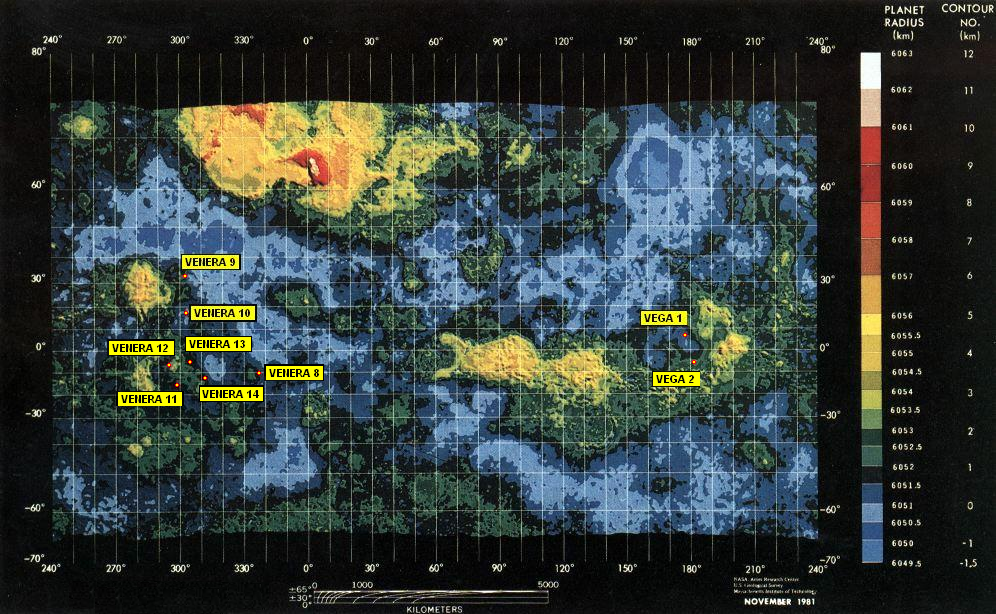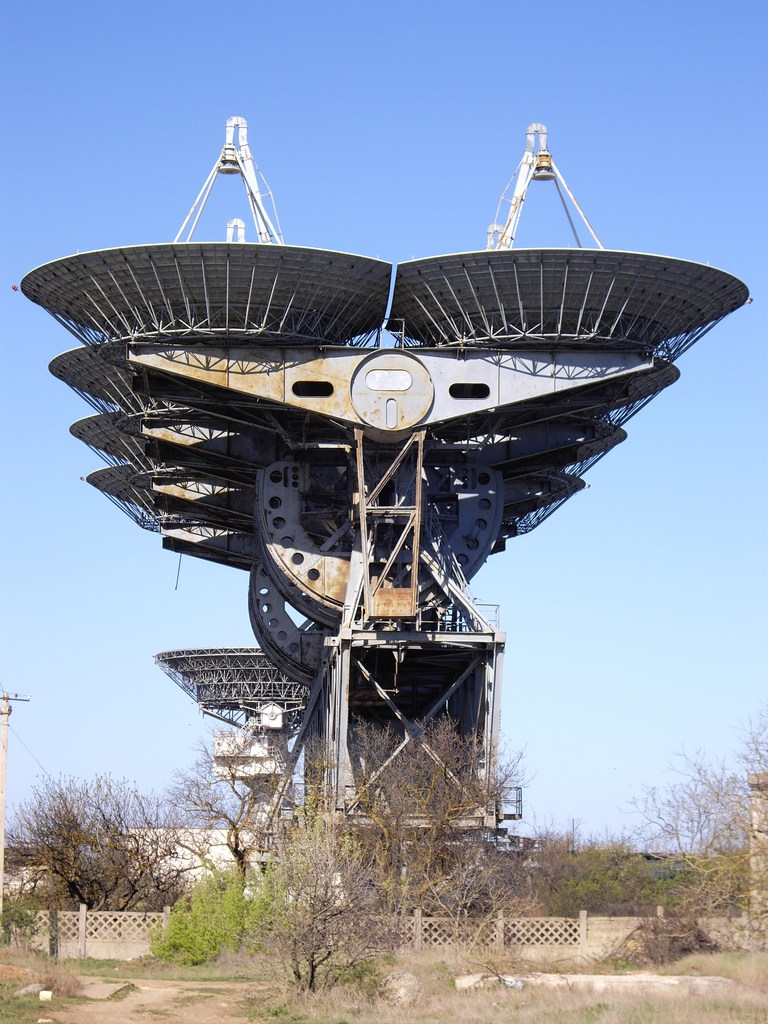|
Pluton (complex)
Pluton (1980s – ''Pluton-M'') is a system of deep space communications and planetary radar in Crimea. It was built in the Deep-Space Communication Center area Eighty-Fifth Radiotechnical Center of Distance Communications with Space Objects; ( uk, 85 радіотехнічний центр телекомунікації з космічними об'єктами); (russian: 85 радиотехнический центр дальней связи с космическими объектами); near Yevpatoria in 1960, and consists of at least three antennas. Three of them are of the ADU-1000 design, an assembly of eight reflector antennas, each with diameter of 16 metres. At the North Station, two receiving antennas were built, and a transmitter was constructed 8.5 kilometres away at the South Station.Don P. MitchelSoviet Telemetry Systems. Deep-Space Communication Centers./ref> Each receiving dish has a Cassegrain system with subreflectors mounted on quadrapods in front of ... [...More Info...] [...Related Items...] OR: [Wikipedia] [Google] [Baidu] |
Jupiter
Jupiter is the fifth planet from the Sun and the List of Solar System objects by size, largest in the Solar System. It is a gas giant with a mass more than two and a half times that of all the other planets in the Solar System combined, but slightly less than one-thousandth the mass of the Sun. Jupiter is the List of brightest natural objects in the sky, third brightest natural object in the Earth's night sky after the Moon and Venus, and it has been observed since Pre-history, prehistoric times. It was named after the Jupiter (mythology), Roman god Jupiter, the king of the gods. Jupiter is primarily composed of hydrogen, but helium constitutes one-quarter of its mass and one-tenth of its volume. It probably has a rocky core of heavier elements, but, like the other giant planets in the Solar System, it lacks a well-defined solid surface. The ongoing contraction of Jupiter's interior generates more heat than it receives from the Sun. Because of its rapid rotation, the planet' ... [...More Info...] [...Related Items...] OR: [Wikipedia] [Google] [Baidu] |
Interbol
Interbol (russian: Интербол) is an international space project under the leadership of the Russian Space Agency and the Space Research Institute of the Russian Academy of Sciences. The list of participants includes the Institute of Atmospheric Research of the Czech Academy of Sciences, NASA, European Space Agency, Japan Aerospace Exploration Agency, and the Canadian Space Agency. The goal of the project is to study the correlations between plasma processes in the tail of the magnetosphere and in the Van Allen radiation belt (auroral particles acceleration region) with a high time-space resolution. Two space probes have been launched into high-altitude elliptical orbits: *auroral probe was launched August 29, 1996 into orbit with an apogee of 20 000 km. The probe was sent to space in the same month as the FAST spacecraft, which studies aurora at both poles; *tail probe was launched August 3, 1995 into orbit with an apogee of 200 000 km; Both orbits are alm ... [...More Info...] [...Related Items...] OR: [Wikipedia] [Google] [Baidu] |
Mars Probe Program
The Mars program was a series of uncrewed spacecraft launched by the Soviet Union between 1960 and 1973. The spacecraft were intended to explore Mars, and included flyby probes, landers and orbiters. Early Mars spacecraft were small, and launched by Molniya rockets. Starting with two failures in 1969, the heavier Proton-K rocket was used to launch larger 5 tonne spacecraft, consisting of an orbiter and a lander to Mars. The orbiter bus design was likely somewhat rushed into service and immature, considering that it performed very unreliably in the Venera variant after 1975. This reliability problem was common to much Soviet space hardware from the late 1960s and early 1970s and was largely corrected with a deliberate policy, implemented in the mid-1970s, of consolidating (or "debugging") existing designs rather than introducing new ones. The names of the "Mars" missions do not need to be translated, as the word "Mars" is spelled and pronounced approximately the same way in Engli ... [...More Info...] [...Related Items...] OR: [Wikipedia] [Google] [Baidu] |
Venera
The Venera (, , which means "Venus" in Russian) program was the name given to a series of space probes developed by the Soviet Union between 1961 and 1984 to gather information about the planet Venus. Ten probes successfully landed on the surface of the planet, including the two Vega program and Venera-Halley probes, while thirteen probes successfully entered the Venusian atmosphere. Due to the extreme surface conditions on Venus, the probes could only survive for a short period on the surface, with times ranging from 23 minutes to two hours. The ''Venera'' program established a number of precedents in space exploration, among them being the first human-made devices to enter the atmosphere of another planet (Venera 3 on 1 March 1966), the first to make a soft landing on another planet (Venera 7 on 15 December 1970), the first to return images from another planet's surface (Venera 9 on 8 June 1975), the first to record sounds on another planet (Venera 13 on 30 October 1981) ... [...More Info...] [...Related Items...] OR: [Wikipedia] [Google] [Baidu] |
The Daily Telegraph
''The Daily Telegraph'', known online and elsewhere as ''The Telegraph'', is a national British daily broadsheet newspaper published in London by Telegraph Media Group and distributed across the United Kingdom and internationally. It was founded by Arthur B. Sleigh in 1855 as ''The Daily Telegraph & Courier''. Considered a newspaper of record over ''The Times'' in the UK in the years up to 1997, ''The Telegraph'' generally has a reputation for high-quality journalism, and has been described as being "one of the world's great titles". The paper's motto, "Was, is, and will be", appears in the editorial pages and has featured in every edition of the newspaper since 19 April 1858. The paper had a circulation of 363,183 in December 2018, descending further until it withdrew from newspaper circulation audits in 2019, having declined almost 80%, from 1.4 million in 1980.United Newspapers PLC and Fleet Holdings PLC', Monopolies and Mergers Commission (1985), pp. 5–16. Its si ... [...More Info...] [...Related Items...] OR: [Wikipedia] [Google] [Baidu] |
Jodrell Bank Observatory
Jodrell Bank Observatory () in Cheshire, England, hosts a number of radio telescopes as part of the Jodrell Bank Centre for Astrophysics at the University of Manchester. The observatory was established in 1945 by Bernard Lovell, a radio astronomer at the university, to investigate cosmic rays after his work on radar in the Second World War. It has since played an important role in the research of meteoroids, quasars, pulsars, masers and gravitational lenses, and was heavily involved with the tracking of space probes at the start of the Space Age. The main telescope at the observatory is the Lovell Telescope. Its diameter of makes it the third largest steerable radio telescope in the world. There are three other active telescopes at the observatory; the Mark II, and and 7 m diameter radio telescopes. Jodrell Bank Observatory is the base of the Multi-Element Radio Linked Interferometer Network (MERLIN), a National Facility run by the University of Manchester on behalf of ... [...More Info...] [...Related Items...] OR: [Wikipedia] [Google] [Baidu] |
Bernard Lovell
Sir Alfred Charles Bernard Lovell (31 August 19136 August 2012) was an English physicist and radio astronomer. He was the first director of Jodrell Bank Observatory, from 1945 to 1980. Early life and education Lovell was born at Oldland Common, Bristol in 1913, the son of local tradesman and Methodist preacher Gilbert Lovell (1881-1956) and Emily Laura, née Adams. Gilbert Lovell was an "authority on the Bible" and, having "studied English literature and grammar", was still "bombarding his son with complaints on points of grammar, punctuation and method of speaking" when Lovell was in his forties. Lovell's childhood hobbies and interests included cricket and music, mainly the piano. He had a Methodist upbringing and attended Kingswood Grammar School. Career and research Lovell studied physics at the University of Bristol obtaining a Bachelor of Science degree in 1934, and a PhD in 1936 for his work on the electrical conductivity of thin films. At this time, he also receive ... [...More Info...] [...Related Items...] OR: [Wikipedia] [Google] [Baidu] |
Active SETI
Active SETI (Active Search for Extra-Terrestrial Intelligence) is the attempt to send messages to intelligent extraterrestrial life. Active SETI messages are predominantly sent in the form of radio signals. Physical messages like that of the Pioneer plaque may also be considered an active SETI message. Active SETI is also known as METI (Messaging to Extra-Terrestrial Intelligence). The term METI was coined by Russian scientist Alexander Zaitsev, who proposed a subtle distinction between Active SETI and METI: In 2010, Douglas A. Vakoch from SETI Institute, addressed concerns about the validity of Active SETI alone as an experimental science by proposing the integration of Active SETI and Passive SETI programs to engage in a clearly articulated, ongoing, and evolving set of experiments to test various versions of the Zoo Hypothesis, including specific dates at which a first response to messages sent to particular stars could be expected. On 13 February 2015, scientists (includi ... [...More Info...] [...Related Items...] OR: [Wikipedia] [Google] [Baidu] |
The Morse Message (1962)
The Morse Message was a series of brief radio messages in Morse code that were transmitted from the Evpatoria Planetary Radar (EPR) complex and directed to the planet Venus in 1962. The message consisted of three words, all encoded in Morse code: the word “Mir” (russian: “Мир”, meaning both “peace” and “world”) was transmitted from the EPR on November 19, 1962, and the words “Lenin” (russian: “Ленин”) and “USSR” (russian: “СССР”, the abbreviation for the Soviet Union — russian: Сою́з Сове́тских Социалисти́ческих Респу́блик, ''Soyúz Soviétskikh Sotsialistícheskikh Respúblik'') were transmitted on November 24, 1962. In Russian, the Morse Message is referred to as the Radio Message “MIR, LENIN, USSR”. The message was the first radio broadcast intended for extraterrestrial civilizations in the history of mankind. It was also used to test the radar station (though not for measuring the dis ... [...More Info...] [...Related Items...] OR: [Wikipedia] [Google] [Baidu] |
Libra (constellation)
Libra is a constellation of the zodiac and is located in the Southern celestial hemisphere. Its name is Latin for weighing scales. Its old astronomical symbol is (♎︎). It is fairly faint, with no first magnitude stars, and lies between Virgo to the west and Scorpius to the east. Beta Librae, also known as Zubeneschamali, is the brightest star in the constellation. Three star systems are known to have planets. Features Stars Overall, there are 83 stars within the constellation's borders brighter than or equal to apparent magnitude 6.5. The brightest stars in Libra form a quadrangle that distinguishes it for the unaided observer. Traditionally, Alpha and Beta Librae are considered to represent the scales' balance beam, while Gamma and Sigma are the weighing pans. Alpha Librae, called Zubenelgenubi, is a multiple star system divisible into two stars when seen through binoculars, The primary (Alpha2 Librae) is a blue-white star of magnitude 2.7 and the secondary (Alpha1 L ... [...More Info...] [...Related Items...] OR: [Wikipedia] [Google] [Baidu] |

.jpg)





